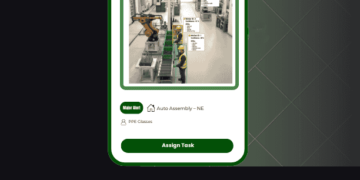In the world of automotive engineering, suspension systems play a vital role in vehicle stability, comfort, and performance. Among the various types of suspensions, the rigid axle suspension system stands out for its simplicity, strength, and load-bearing capacity. Often used in heavy-duty trucks, off-road vehicles, and some SUVs, the rigid axle setup is an enduring choice in specific applications where durability and reliability are crucial.
While modern cars often favor independent suspensions for a smoother ride, the rigid axle—or solid axle—still has significant advantages, especially in scenarios where toughness and straightforward maintenance are more valuable than refined comfort.
What Is a Rigid Axle Suspension System?
A rigid axle suspension system refers to a design where both wheels on an axle are connected and move as a unit. When one wheel moves up or down due to a bump or dip, the other wheel is affected because of the shared axle housing. This type of suspension is also commonly called a solid axle or beam axle.
The rigid axle may be used in either the front or rear of a vehicle, but it is most commonly found in the rear suspension, especially in trucks and off-road vehicles.
Key Components
A typical rigid axle suspension system includes:
- Axle Housing: A solid casing that holds the differential and connects both wheels.
- Leaf Springs or Coil Springs: Provide cushioning and absorb road impacts.
- Shock Absorbers: Reduce vibration and improve ride control.
- Trailing Arms or Control Arms: Maintain axle alignment during motion.
This simple yet effective configuration offers maximum support for vertical loads and lateral forces.
Advantages of a Rigid Axle Suspension System
- Strength and Durability
Rigid axles are incredibly robust, making them ideal for heavy-duty applications. They can support substantial weight without flexing or deforming. - Easy to Maintain
With fewer moving parts compared to independent suspensions, rigid axle systems are easier and cheaper to maintain. Mechanics can access and repair them without extensive disassembly. - Off-Road Capability
In off-road environments, solid axles provide better ground clearance and articulation. They ensure that both wheels stay planted, improving traction over uneven terrain. - Superior Load Handling
Vehicles that regularly carry heavy loads—like commercial trucks and buses—benefit from the rigid axle’s ability to evenly distribute weight. - Simplicity of Design
The straightforward architecture of a rigid axle system makes it more resistant to damage and failure, especially under rugged conditions.
Disadvantages of Rigid Axle Suspension
While the rigid axle suspension system excels in durability and strength, it comes with trade-offs:
- Reduced Comfort: Because both wheels are connected, road bumps on one side can affect the entire axle, making the ride less smooth.
- Handling Limitations: This setup doesn’t respond as well to dynamic driving conditions like cornering or high-speed maneuvers.
- Unsprung Weight: The entire axle moves with the wheels, which increases unsprung weight and affects ride quality.
These limitations are why rigid axles are uncommon in modern passenger cars but still dominant in specific vehicle categories.
Applications of the Rigid Axle Suspension System
The rigid axle system is ideal in:
- Pickup Trucks: For towing and carrying heavy payloads.
- Off-Road Vehicles: Such as Jeeps and utility 4x4s, where strength and articulation are key.
- Commercial Trucks and Vans: Where durability outweighs comfort.
- Military Vehicles: Due to their need for rugged, low-maintenance suspension systems.
Even some passenger SUVs, especially older models or those built for heavy-duty use, continue to use solid rear axles.
Evolution and Innovations
Although the core design of the rigid axle suspension system has remained largely unchanged, automakers have made refinements to improve performance:
- Four-Link and Five-Link Setups: Help manage axle movement more precisely.
- Air Suspension Integration: Enhances comfort while retaining load-handling capability.
- Electronic Stability Enhancements: Reduce the drawbacks of solid axles under dynamic conditions.
These improvements help modern vehicles maintain some comfort and control while leveraging the ruggedness of rigid axles.
Comparison with Independent Suspension
| Feature | Rigid Axle Suspension | Independent Suspension |
|---|---|---|
| Ride Comfort | Moderate | High |
| Off-Road Performance | Excellent | Moderate |
| Maintenance | Simple | Complex |
| Load Capacity | High | Lower |
| Cost | Lower | Higher |
The choice between these systems depends on the vehicle’s intended use. If durability and load capacity matter most, a rigid axle system is ideal. If comfort and cornering performance are priorities, independent suspension is preferable.
Conclusion
The rigid axle suspension system is a tried-and-true solution for vehicles that demand strength, stability, and ease of maintenance. While it may not offer the comfort and handling finesse of modern independent systems, its rugged construction continues to be the backbone of commercial vehicles, off-road machines, and heavy-duty haulers.
If you’re looking for a suspension system that delivers performance in tough environments, withstands heavy loads, and lasts for years with minimal fuss, the rigid axle is a solid choice—literally and mechanically. In a world of complex systems, sometimes simplicity and strength still win the race.



















